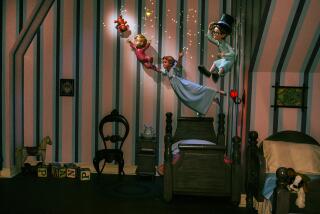U.S. firms learn parks’ local culture
- Share via
Although U.S. companies’ international theme parks contain many of the elements that made them famous, they all have to adapt -- at least in some way -- to the local culture.
Consider Disney’s learning experiences: When its Paris park opened, it banned alcohol but offered a variety of gourmet, sit-down restaurants. But Parisians wanted their Chardonnay -- and American fare.
“They wanted what Americans do: hot dogs,” said Al Lutz, editor of the Disney fan website Miceage.com. “They want churros and popcorn and all that stuff. . . . [Companies] go into it a lot just learning, and they figure it out.”
The Paris version of Haunted Mansion featured Vincent Price narrating the English-language attraction, but his voice was replaced with a French soundtrack.
In Hong Kong, meanwhile, Disney hired a feng shui master, whose recommendations prompted designers to rotate the park’s front gate and place several five-ton boulders on the grounds. On its first day, the park opened at 1 p.m., a time determined by an ancient Chinese system of harmonizing with nature. And Hong Kong’s Mickey Mouse dresses in local garb and bows.
In Japan, riders on Splash Mountain plummet down the flume, but they don’t get wet. “It’s designed to keep them dry because the Japanese don’t like to get wet,” Lutz said.
Other aspects of planning are more complicated, said Christian Aaen of theme park consulting firm Economic Research Associates.
Main rides, shows and attractions have to be adapted for signage and language. Major roller coasters aren’t being built in China, he said, because they don’t appeal to the public there yet.
In Dubai, developers are planning around the weather, including extreme heat and potential sandstorms.
“It’s redesigned with a lot more shading and building and air-conditioning,” Aaen said.
Crowd control may also present issues, particularly in countries where people are more accustomed to pushing their way to the front than waiting in line. One possible remedy parks are considering, Lutz said, is narrower, single-file queuing areas.
“They rush doors, they cut in lines, they push through to the front,” Lutz said. “It’s not that they’re being vicious, it’s just a different culture.”
--



